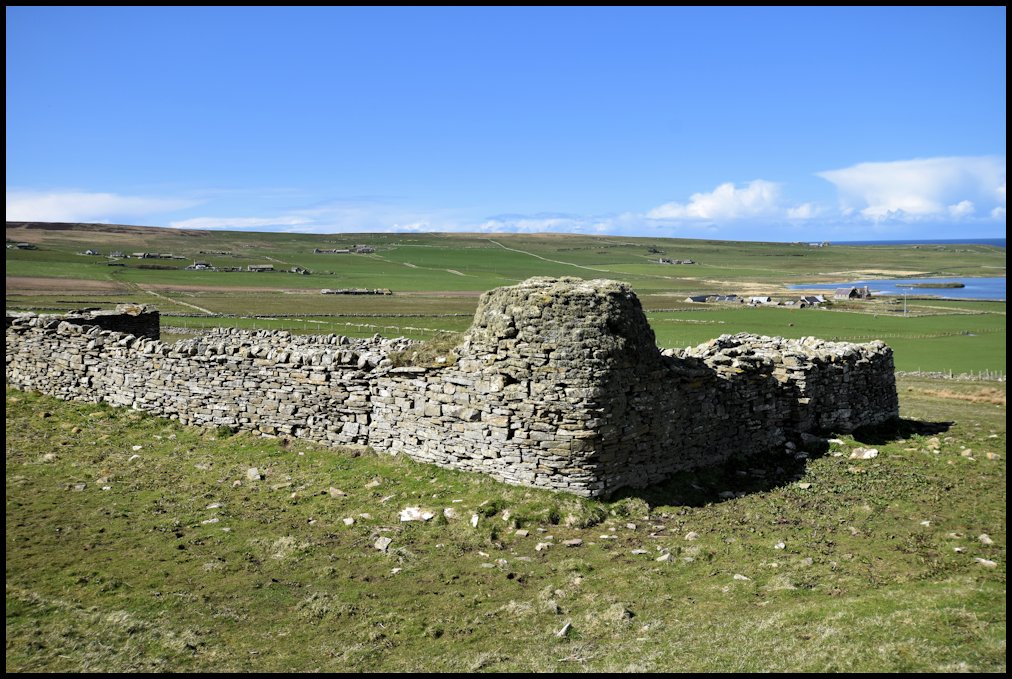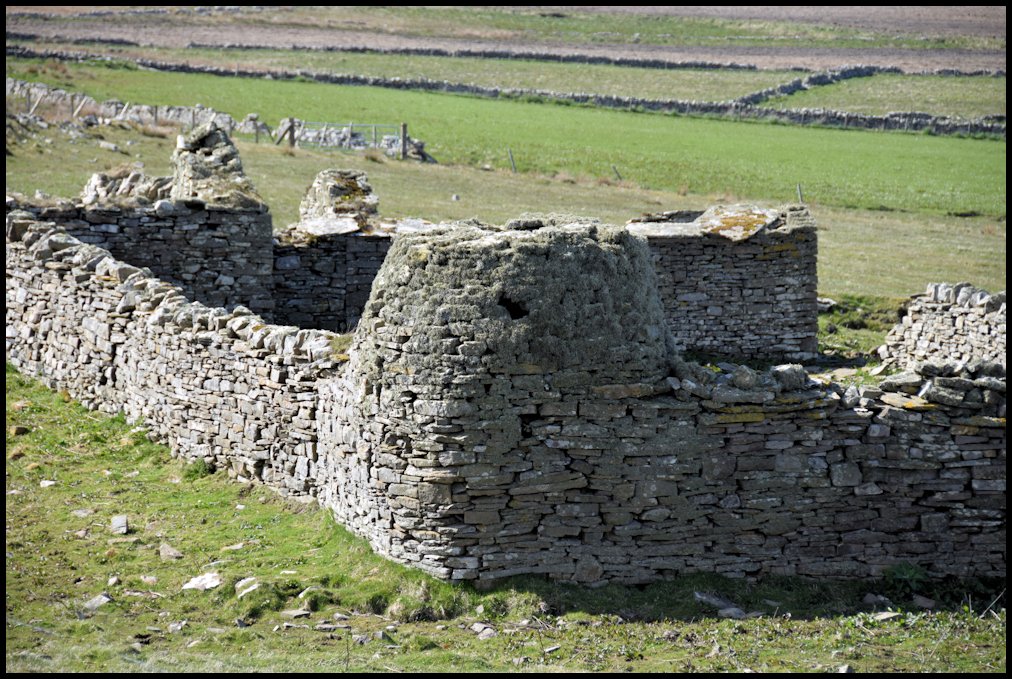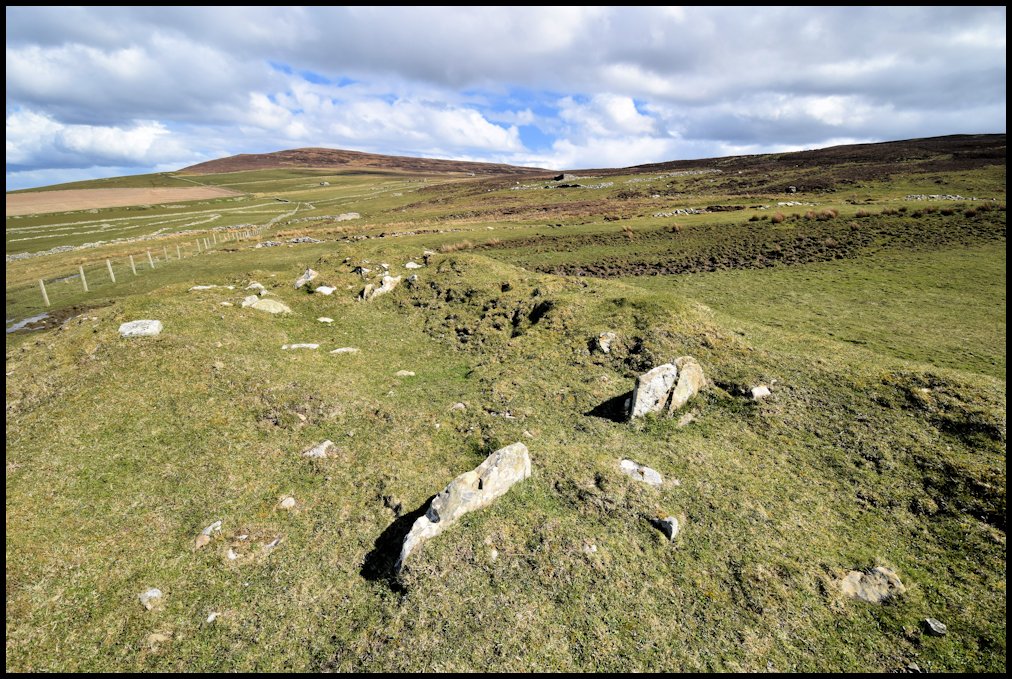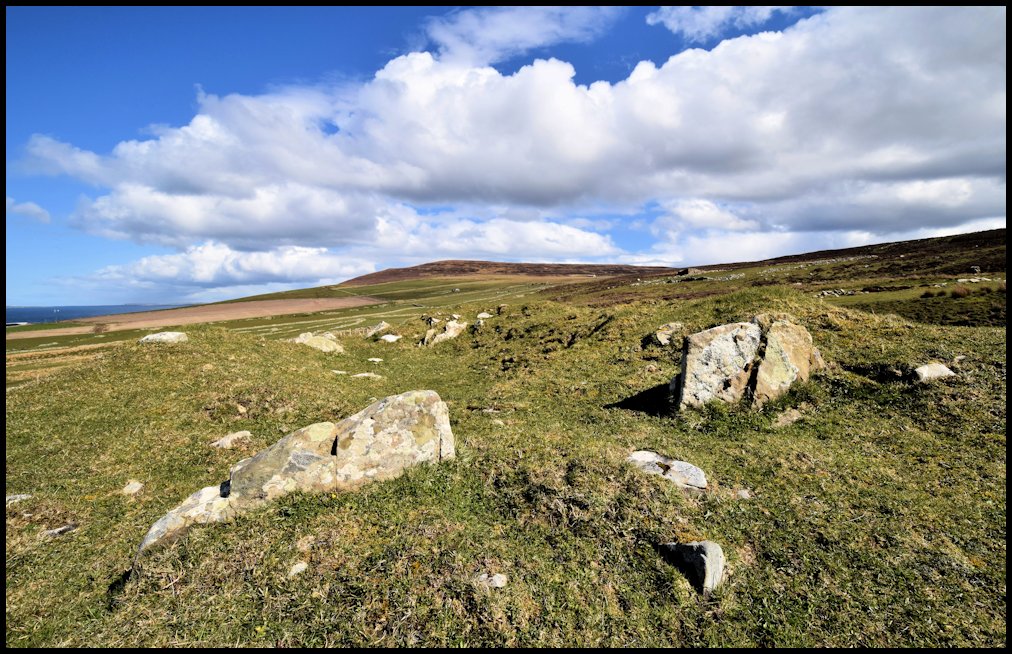Lingro was the name of an old house, later incorporated with the farm of Feolquoy in Wasbister. Early occupants were George and Alex Costay between 1801 and 1810, and William Harcus in 1817. William Craigie and his wife Janet Marwick lived at Lingro too, their only child, a daughter christened Janet Marwick, was born there on March 24th 1819.
In 1841 it was where farmer George Inkster lived with his family, paying £1 rent. George was the son of Thomas Inkster and Christy Marwick of Deithe and he was born in 1781. In 1814 at Cogar he married Jean Marwick, the daughter of John and Jean Marwick and they had six children; Hugh, born on January 6th 1815; Mary on March 18th 1816; Margaret on August 4th 1818; George on July 7th 1820; Janet on May 10th 1823; and John, who was born on February 11th 1827. Jean died at Lingro in 1857 aged 70, and George also died there, in 1867 at the age of 86.
The census of 1871 tells us that Lingro was occupied by stonemason and farmer Magnus Alexander, and he was paying £4 rent. He was the son of James Alexander and Barbara Marwick of Breckan, and he was born on May 9th 1819 at the old house of Cutclaws on the Westside. [His younger brother William was lost over the cliffs there.] In 1844 he married 26-year-old Margaret Inkster, daughter of the above mentioned George Inkster and Jean Marwick, who was then living at Deithe, and they had six children; Mary, born in 1845; David in 1847; Jane in 1849; James in 1854; Margaret in 1857; and Hannah, who was born in 1860.
By 1881 Magnus Alexander and his family had moved to nearby Cairn and 28-year-old Alexander Gibson Craigie and his family lived at Lingro. He was the son of Alexander Craigie and Ann Murray who lived nearby at Feolquoy. In 1879 he married Jane Elizabeth Gillespie, and between 1880 and 1897 they had seven daughters; Daisy, Annabella, Edith Mary, Beatrice Laing, Emily Seatter, Ivy Cooper, and Hilda Keith Spark.
The photo above shows what is left of what is known as the ‘Knowe of Lingro’, an Orkney-Cromarty stalled cairn, lying on the hillside in a sloping field.
It was visited by renowned archaeologist Vere Gordon Childe in 1941 and later in 1963 by A S Henshall. [Audrey Henshall studied chambered cairns and their contents throughout her professional life with the National Museum of Antiquities of Scotland and the Society of Antiquaries of Scotland.] These are her findings regarding the Knowe o’ Lingro:-
The turf-covered mound is rectangular in plan with rounded corners, measuring 70 ft E-W and 40 ft N-S, and about 5 ft high. It has a well-defined edge, but this is greater in extent than the construction it covers, for what appears to be a short length of the wall facing of the cairn is exposed 5 ft within the edge on the S side.
The top of the mound has been removed and a number of upright slabs are just exposed in the centre. These slabs are aligned at right angles to the main axis and are evidently the divisional slabs of a stalled chamber. Five stones can be seen on the N side of the chamber and three on the S side. The paved stones are set 3 ft apart and the compartments seem to be about 5 ft long. A short length of the N wall-face of the chamber can be seen in the centre of the N side. Neither end of the chamber is exposed and it is presumably considerably longer than the 22 ft indicated at present.



